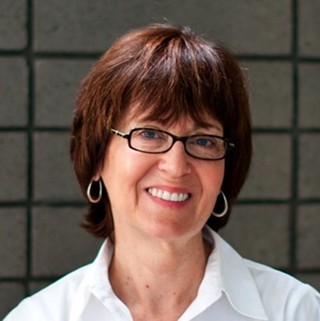The first time I visited the UA's first Poetry Center, I was struck by the light moving across the yard, the trees and the people milling about as I listened raptly to Lois Shelton share memories of the poets she had greeted over the years with her husband, Richard Shelton, a poet and retired UA creative writing professor.
No one had to explain to me then the importance of poetry, but what Lois did, without pretense, was make me understand how important the Poetry Center is. Well-known poets found their way to this special place over the years along with thousands of students who discovered a love for poetry while listening to those poets give readings at the center.
That old house where Lois helped direct the center from 1970 into the 1990s was where the center first took root. Its founder, Ruth Stephan, purchased a cottage near the UA in 1960 to house the center. Lois was also there when the center lost the house and moved into a temporary location. It was a difficult time for the center and everyone who loved what it had come to represent.
I couldn't help but think of Lois while I walked through the Poetry Center's 7-year-old home on Helen Street recently with executive director Gail Browne. Browne's 11-year tenure at the center ends this month and new director Tyler Meier starts on Aug. 5.
When the new center opened, "The first thing we did was take our books out of storage and bring them out here," Browne says, surveying the center's library and the row of shelves that display a majority of the center's collection. There are also archives and rare book rooms, but it's this space that seems to have carried some of that special light I remember from the center's first home.
Browne was hired expressly to help raise the funds needed to ensure that the center had a permanent home. It was completed in 2007. She stuck around and continued to help the center's reputation and mission grow, but she told us she decided to leave because she recognizes it's time for a new person to help the center expand its vision.
"I suppose in part because I come from the business and marketing world, I have a strong sense of cycles and setting goals and expectations," Browne says. "We've met those goals."
"I really believe I was hired to build the building and create the organization that was appropriate for this building, and I've come to feel a completion of that cycle ... I feel that the ways in which we've connected with local community— all that feels really solid and secure. The center is thriving and can adjust to a new change in leadership."
Browne says that although she has a master's in literature, her work in the arts was focused on marketing and communications. She said the new director, who worked as managing editor for The Kenyon Review, is more aligned with writing and publishing.
"I can't imagine what is next for the center and that is how it should be. This is the most extraordinary experience of my life," she says.
There's a pattern in the wall on the east side of the center's building that is the architect's way of honoring Richard and Lois Shelton's contributions and dedication to the center, and to poetry. The pattern is binary code, and it relates a line from one of Richard Shelton's poems: "... you shall learn the art of silence."
Browne's work took the center exactly where he and other supporters and board members wanted to see it go, Shelton says. "We all owe her a great debt for what she's done and I hope she will not distance herself from us. She's a really lovely person and wonderful to work with."
Shelton says there have been academics who have led the center, such as himself and Alison Deming of the UA's creative writing department, but it was Browne's fundraising and administration skills that helped it get to the next level.
"It's what it's always wanted to be and is now a very active part of the community, and that means it is bigger than the university and is an important part of the community," he said. "That was Ruth Stephan's dream when she started the center. It started as a little quiet place for poetry, but she planned it to be more than that."
Browne is now living in Phoenix and hopes to continue working in the arts in some capacity. She leaves, she says, with some amazing memories as a reward for her hard work, such as getting Gary Snyder to read at the center's 50th anniversary celebration. Poet Fanny Howe has been at the center twice, and made an impression on Browne.
"She's an incredible human being—warm, deeply wise and someone you feel you learn from just by being in her presence," Browne says.
Former U.S. poet laureate Billy Collins also read at the 50th anniversary as well as the dedication of the new building in 2007.
"At this unprecedented building is a physical symbol that poetry is finally moving to the center of American culture," Collins said in his dedication speech.
"It sure feels that way," Browne says. "We are always well-regarded; there is something about this building."
Browne says she owes much of her early success at the center to Frances Schoberg, who directed the center's programming, allowing Browne to focus on raising more than $5 million for construction.
"We showed that people had a lot of love for the center ... for poetry."












